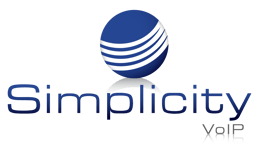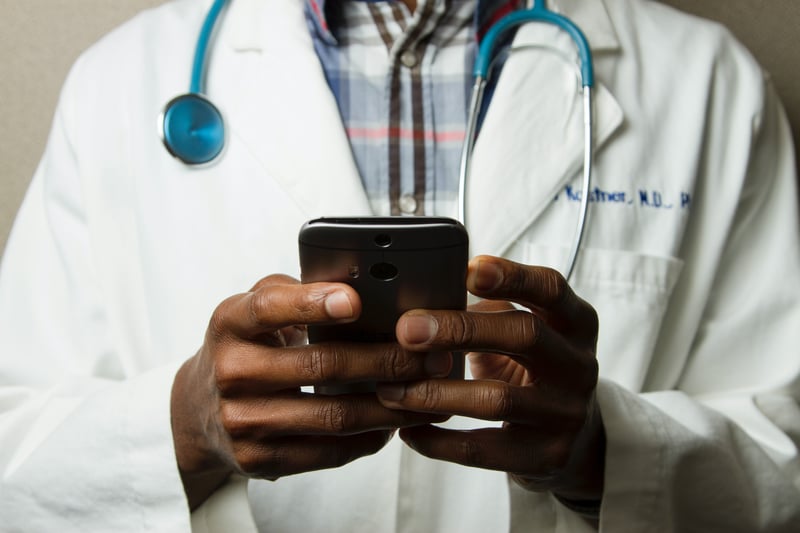Industry Series: The Benefits of VoIP In Healthcare
There's no question that effective communication plays a vital role in delivering quality care. For this reason, healthcare professionals must choose their phone system carefully. Your phone system should not only enable effective communication but benefit your organization.
This is where Voice over Internet Protocol (VoIP) technology steps in to revolutionize the way healthcare professionals communicate. From improved accessibility and mobility to efficient telemedicine solutions, VoIP enhances communication channels, streamlines processes, and, ultimately, improves patient outcomes. Join us as we discuss how.
Effective communication is the backbone of any successful healthcare system. Clear and efficient communication among healthcare professionals, patients, and other stakeholders is essential for providing timely and accurate care. In an industry where lives are at stake, seamless communication can significantly impact patient outcomes and satisfaction. Alternatively, poor communication costs the healthcare industry $100 billion per year.
Enhanced Communication in Healthcare
Let's explore how VoIP technology can enhance business communication in the healthcare industry.
Improved accessibility and mobility
VoIP technology allows healthcare professionals to communicate from anywhere, at any time. With VoIP, medical practitioners can integrate multiple devices, such as desktop computers, laptops, smartphones, and tablets, allowing them to access their communication tools and systems on the go.
Whether in the office, attending conferences, or making rounds in the hospital, healthcare professionals can stay connected and collaborate seamlessly. This enhanced accessibility and mobility enable faster decision-making, efficient patient management, and improved care coordination.
Efficient and cost-effective telemedicine solutions
Telemedicine has gained significant traction in recent years, offering remote healthcare services to patients in need. VoIP is crucial in facilitating telemedicine by providing secure and high-quality voice and video communication channels. Through virtual consultations, patients can connect with healthcare providers without needing in-person visits, which is especially beneficial for those in rural or underserved areas.
Additionally, VoIP enables remote patient monitoring, allowing healthcare professionals to gather vital patient data and provide timely interventions. The cost savings associated with telemedicine are significant, reducing travel expenses for both patients and medical practitioners while increasing accessibility to specialized care.
By leveraging the power of VoIP, healthcare organizations can streamline communication processes, enhance collaboration among teams, and ultimately deliver better patient care. Now, let's delve into the specific VoIP features that can be applied to the healthcare industry, addressing the sector's unique needs and regulatory requirements.
Applications of Simplicity VoIP in the Healthcare Industry
1. Advanced Call Routing and Call Forwarding
Efficient call handling is crucial in the healthcare industry, where timely communication can impact patient care. VoIP systems offer advanced call routing and forwarding features to optimize communication workflows.
Advanced call routing allows users to direct incoming calls to the appropriate healthcare professional or department based on predefined rules. For example, you can automatically route calls to specific extensions, departments, or even different locations. This feature ensures that patient calls are efficiently directed to the right person, reducing wait times and enhancing the patient experience. VoIP systems also offer customizable call routing options, such as time-based routing or simultaneous ringing on multiple devices.
Call forwarding is another helpful feature that enables healthcare professionals to redirect calls to different devices or locations. For instance, if a physician is on-call or away from the office, calls can be forwarded to their mobile phone or another designated device. This ensures that doctors don't miss critical patient calls, improving responsiveness and accessibility.
Another instrumental feature is SpeechDirect, which enables a hands-free experience for callers. With mid-speech detection, callers can speak, rather than select digits from a phone when speaking with a company directory or Auto Attendant. As the system detects speech, it routes calls based on keywords.
2. Call Recording and Transcription
VoIP systems often include call recording and transcription capabilities, which are valuable for quality assurance, training purposes, and legal compliance. Recording and transcribing calls enable healthcare organizations to review and analyze conversations for accuracy, provide evidence in case of disputes, and identify areas for improvement.
Call transcription also saves money. It is estimated that one hour of AI enabled transcription equates to four hours of manual transcription. Compared to the hourly rate of staff, AI transcription is very cost-effective.
3. Integrated Messaging and Collaboration Tools
Effective communication in healthcare extends beyond voice calls. VoIP technology provides integrated messaging and collaboration tools that enhance teamwork, information sharing, and workflow efficiency.
Instant messaging (IM), SMS, and chat features enable healthcare professionals to communicate quickly and securely within the organization. These tools are especially beneficial for quick questions, sharing updates, or seeking real-time clarification. SMS and IM platforms integrated with VoIP systems often provide secure messaging, ensuring the privacy and confidentiality of patient-related conversations.
Furthermore, VoIP systems can integrate with existing healthcare software and systems, such as electronic health record (EHR) systems. This integration ensures seamless information flow and reduces the need for manual data entry, saving time and minimizing the risk of errors.
4. Mobile App and Webphone
With mobile app and webphone capabilities, healthcare professionals can stay connected from anywhere, using their smartphones, tablets, or web browsers. These features enable healthcare providers to access their VoIP system and communication tools on the go, ensuring seamless communication regardless of their physical location. An added benefit, is that the healthcare professional's personal mobile devices and numbers are protected, as the company phone number is displayed when receiving and making calls.
5. E911 Enhancements
Emergency situations require fast and accurate communication. VoIP systems include E911 enhancements that automatically transmit a caller's location information to emergency responders, helping to ensure a swift response in critical situations. In addition, VoIP systems can notify company representatives - security, administration, front desk workers - when an E911 call is made from an on-site phone facilitating expedited access to a person in distress. These features are crucial for maintaining the safety and well-being of patients and staff.
6. Call Center and Analytics
VoIP offers call center functionalities, allowing healthcare organizations to efficiently handle a high volume of calls. Call analytics provide valuable insights into call volume, wait times, call durations, and other key metrics. This data can be used to optimize call center operations, improve resource allocation, and enhance the overall patient experience.
Call center features also offer information to callers such as estimated wait times, place in the call queue, or the option to have a call back in the order that the call was received.
7. Afterhours Answering
Afterhours answering features ensure that patient calls are always answered, even outside of regular business hours. Calls can be routed to a designated on-call professional or to a live answering service, ensuring that patients receive prompt attention and appropriate care regardless of the time.
8. Voicemail Notify
VoIP systems can notify healthcare professionals via a call, SMS, or email when a voicemail is received. This feature enables prompt response to patient messages, reducing the risk of missed or delayed communication. Voicemail notify ensures that healthcare providers can address patient needs in a timely manner. In addition, there is a record of all voicemails left, so that healthcare administrators can review call metrics and ensure prompt response times.
9. vFax
The secure transmission and management of documents, including patient records and prescriptions, are of utmost importance in the healthcare industry. Traditional fax machines are not only cumbersome but also pose security risks. This is where vFax, or virtual faxing, comes into play. VoIP offers a modern and secure alternative to traditional faxing methods.
vFax enables healthcare organizations to digitize fax communications, eliminating the need for physical fax machines and paper documents. With vFax, incoming faxes are received electronically, and doctors can access them from any device connected to the VoIP network. This streamlines document management and storage, reducing the risk of lost or misplaced documents.
Plus, vFax enhances the privacy and security of sensitive patient information, as well as provides audit trails and logging features. These capabilities allow healthcare organizations to maintain compliance with regulatory requirements, like HIPAA.
10. Security Measures and Protocols
Speaking of HIPAA, security is a critical concern in the healthcare industry, as it's vital to safeguard patient data privacy at all times. VoIP technology prioritizes security and offers features that help healthcare organizations meet HIPAA compliance requirements.
In addition to having secure communication features like vFax, VoIP systems employ robust encryption methods to ensure the confidentiality and integrity of voice and data transmissions. This encryption protects sensitive patient information from unauthorized interception or eavesdropping. Healthcare professionals can safely discuss patient conditions, treatment plans, and other confidential matters using secure communication channels.
Furthermore, VoIP solutions can provide additional security measures, such as access controls, authentication protocols, and network monitoring tools. These features help prevent unauthorized access to the VoIP system, reducing the risk of data breaches and ensuring that only authorized personnel can access patient information.
Benefits of VoIP for Patients and Providers
VoIP technology brings many benefits for both patients and healthcare providers, improving overall healthcare experiences and outcomes.
Patient Benefits:
- Enhanced accessibility and convenience: With features like virtual consultations and remote monitoring, patients can receive medical advice and follow-up care from their homes. This eliminates the need for long-distance travel, reduces waiting times, and provides timely access to specialized healthcare services, particularly for those in rural or underserved areas.
- Improved patient satisfaction: Automated reminders via voice calls or text messages reduce the likelihood of missed appointments, ensuring patients receive the care they need promptly.
- Efficient communication: Personalized communication channels enable patients to have direct and efficient contact with their healthcare providers, fostering a sense of trust and engagement in their healthcare journey.
Provider Benefits:
- Streamlined communication: VoIP streamlines communication within healthcare teams, enabling seamless collaboration and information sharing. Instant messaging and integrated collaboration tools facilitate quick communication and efficient decision-making among medical professionals, improving patient care and outcomes.
- Accurate information sharing: VoIP features like call routing and call forwarding ensure that important calls are directed to the right individuals or departments promptly, reducing response times and enhancing workflow efficiency.
- Cost-effective phone system: By reducing expenses associated with traditional phone systems and travel, healthcare organizations can invest in innovative healthcare technologies, training programs, and patient-centered initiatives.
- Optimized resource allocation: The cost-effectiveness of VoIP solutions allows healthcare providers to optimize their resources and allocate more time and attention to patient care.
By leveraging the advantages of VoIP technology, both patients and healthcare providers can experience enhanced communication and ultimately contribute to improved healthcare outcomes.
Unleashing the Power of VoIP in Healthcare
In an increasingly digital and interconnected healthcare landscape, VoIP technology offers significant advantages for the industry. From streamlined communication and enhanced collaboration to improved accessibility and cost-effectiveness, VoIP empowers healthcare organizations to deliver better patient care. By leveraging features like vFax, security and HIPAA compliance, advanced call routing, and integrated messaging tools, healthcare providers can optimize their communication workflows and focus more on patient outcomes.
To unlock the full potential of VoIP for your healthcare organization, switch to Simplicity VoIP!







